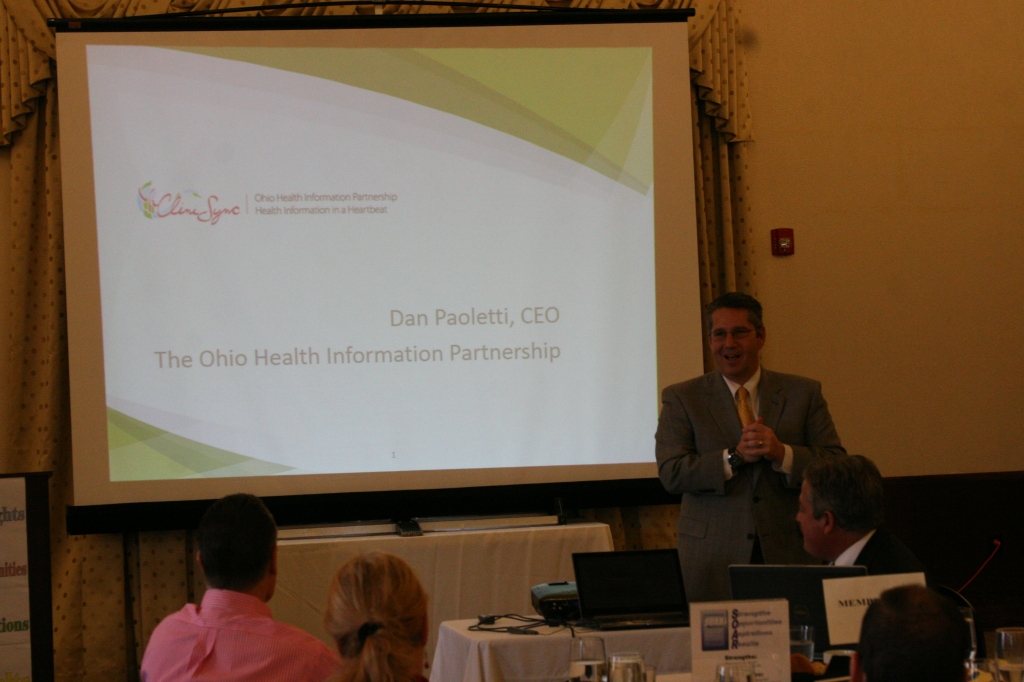Change is coming to the Medicare and Medicaid Electronic Health Records (EHR) Incentive Programs with new rules that the Centers for Medicare & Medicaid Services (CMS) say indicate a move toward simplicity and flexibility, but AOA believes even more could be done to make the program work.
AOA urged CMS to structure the program in a way that is less burdensome and more helpful.
CMS announced the final rule Oct. 6, noting that the agency took under consideration providers’ concerns regarding the challenges and burdens with using the technology in major changes that ease reporting, support interoperability and improve patient outcomes. Several of the changes finalized were in response to issues and concerns communicated in AOA’s outreach to the agency.
However, the AOA still has serious concerns with how CMS operates the EHR Incentive Programs, and for the second year in a row, the agency has made last-minute changes just months before the end of the current year’s reporting period. These last-minute changes force physicians to scramble to get up to date on program changes and to quickly implement them in their practice.
Since the program’s inception, AOA has urged CMS to structure the program in a way that is less burdensome to physicians and more helpful to patients. The AOA understands the significant time and resource commitment needed to meet the meaningful use requirements and hopes the changes for the 2015 program year, late as they are, will provide some relief.
For doctors of optometry planning to participate in the program this year, there are several changes to take note of immediately, including:
- 90-day reporting period.Physicians may now choose any 90-day reporting period for 2015. CMS previously intended to require a 12-month reporting period in 2015, but physicians now have the flexibility to select any 90-day reporting period in 2015.
- Patient electronic access. Physicians are now required to have only one patient view, download or transmit (VDT) to a third party their health information. CMS previously required that 5 percent of a physicians’ patients VDT information. This is a significant reduction that will hopefully provide relief for many doctors of optometry.
- Secure electronic messaging. Physicians are now required only to have the capability for patients to send and receive a secure electronic message fully enabled during the reporting period. CMS previously required that 5 percent of patients use secure electronic messaging. AOA has often heard from doctors of optometry regarding the difficulty of the secure messaging measure and this change should make this a less onerous requirement.
The AOA will provide more specific information on these changes and Stage 3 program requirements in future updates. If you have questions, please contact Kara Webb, associate director for Coding and Regulatory Policy, at .
More about CMS’s changes to the EHR Incentive Programs
The final rules reflect insight from the AOA and more than 2,500 comments with physicians and other providers describing real-world difficulties in making the technology work well for their individual practices and their patients.
According to a CMS fact sheet, significant changes include:
- “Check box” process measures removed.CMS hopes this will shift emphasis of health IT to a tool for care improvement, rather than as an end in itself.
- Reduced objectives.CMS cut objectives—from 18 to 10 for 2015 through 2017. For Stage 3 meaningful use in 2017, there are 8 objectives for doctors. CMS indicates physicians also will have to report clinical quality measures (CQMs) only once to receive credit for other programs, aligning CQMs with other CMS quality reporting programs.
- Extended reporting periods.CMS allows 90-day reporting periods for all physicians in 2015, 90-day reporting periods for physicians new to the program in 2016 and 2017, and to anyone choosing to adopt 2018 measures a year early.
- Program start date.CMS set the Stage 3 start date to Jan. 1, 2018.
- Interoperability key.CMS claims they want to put the emphasis on interoperability over data entry. Given the current and significant infrastructure problems that impede interoperability, the AOA is concerned that CMS may again be moving too fast too soon with increasingly difficult program requirements.
Additionally, CMS announced a 60-day public comment period to garner supplementary feedback about Stage 3, specifically as it relates to the Medicare Access and CHIP Reauthorization Act of 2015 (MACRA). This act established the new Merit-based Incentive Payment System (MIPS) to consolidate aspects of federal programs and quality measurements into a more efficient system. Feedback from the public comment period will facilitate rulemaking for MACRA—of which CMS expects new rules released in early 2016.
Click here to find more information on the final rules and the CMS EHR Incentive Programs.


